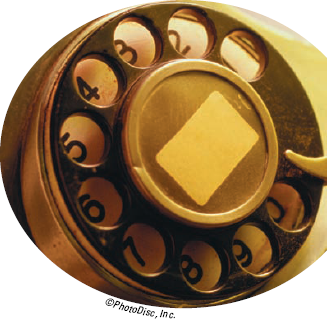Chapter 4. Understanding the Phone-damentals
In This Chapter
Making a call
Visualizing visual voicemail
Recording a greeting
Calling hands-free
Receiving a call
Choosing ringtones
Setting up conference calls
Facing up to FaceTime
You may well have bought an iPhone for its spectacular photo viewer, marvelous widescreen iPod, and the best darn pocket-sized Internet browser you've ever come across. Not to mention its overall coolness.
For most of us, though, cool goes only so far. The iPhone's most critical mission is the one from which its name is derived — it is first and foremost a cell phone. And no matter how capable it is at all those other things, when push comes to shove, you had best be able to make and receive phone calls.

That puts a lot of responsibility in the hands of AT&T, the iPhone's exclusive wireless carrier in the United States. As with any cell phone, the strength of the wireless signal depends a great deal on your location and the robustness of the carrier's network.
As noted in Chapter 1, the cell-signal status icon at the upper-left corner of the screen can clue you in on what your phone-calling experience may be like. Simply put, more bars supposedly equate to a better experience. What you hope to avoid are those two dreaded words: No Service. Cell coverage aside, this chapter is devoted to all the nifty ways you can handle wireless calls on an iPhone.
And when we say nifty ...
Get iPhone® For Dummies®, 4th Edition now with the O’Reilly learning platform.
O’Reilly members experience books, live events, courses curated by job role, and more from O’Reilly and nearly 200 top publishers.

